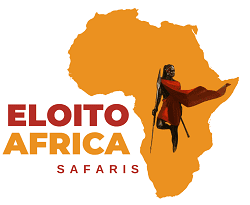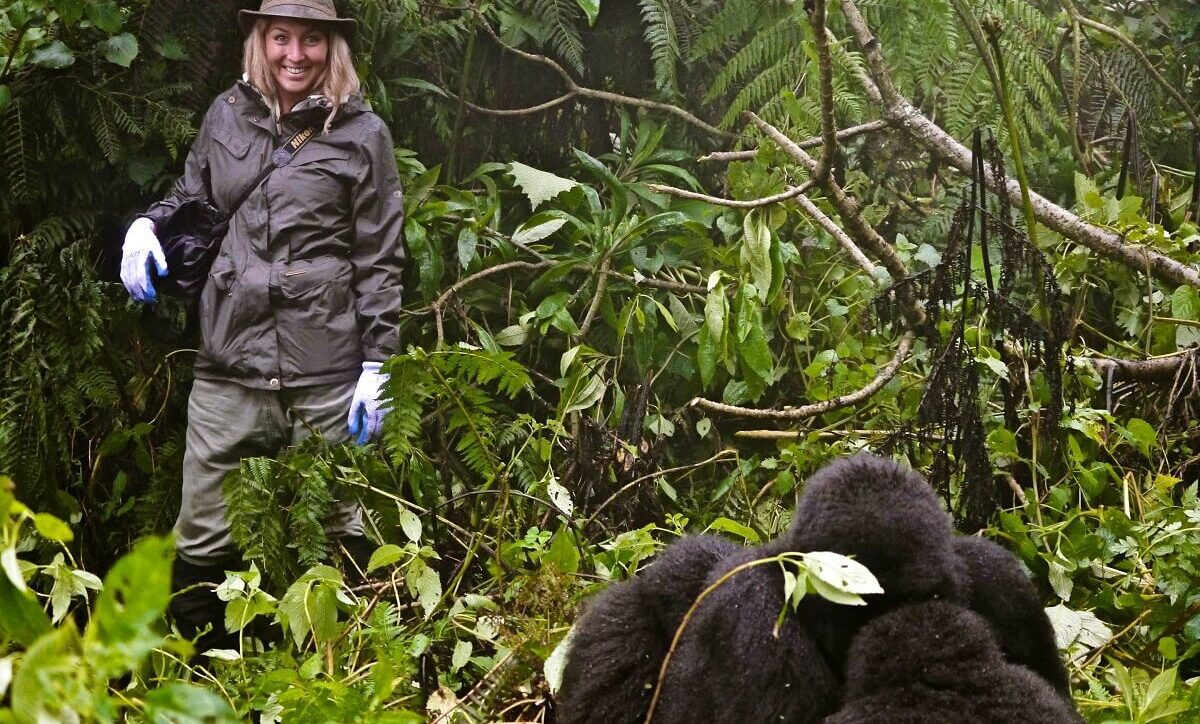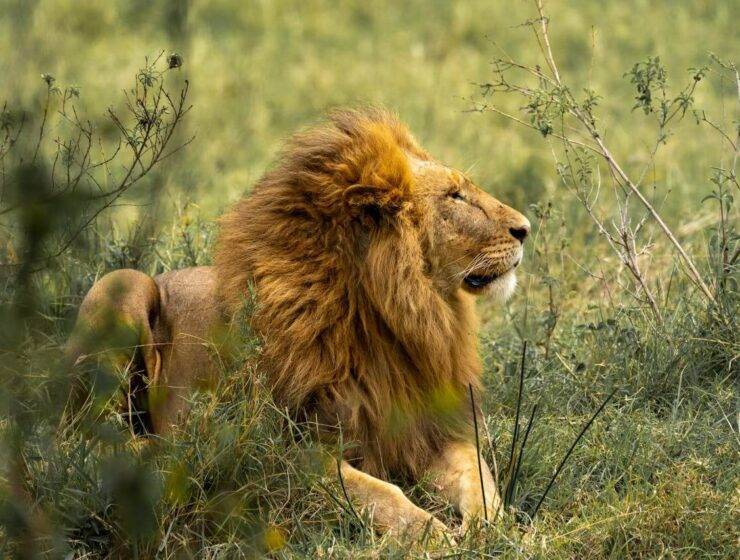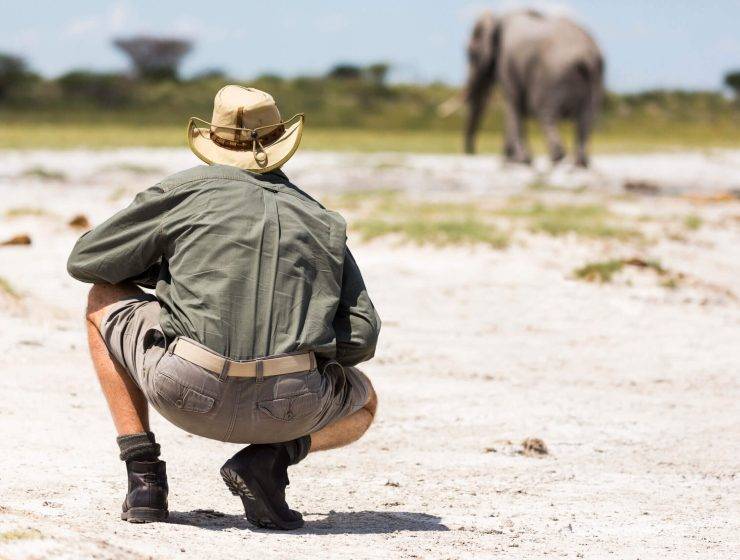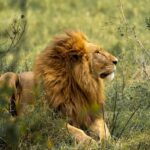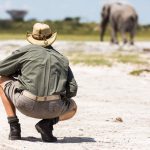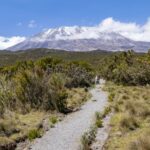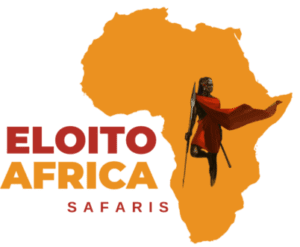Gorilla trekking is an unforgettable adventure, offering the chance to see these majestic primates up close in their natural habitat.However, most travelers usually wonder what to wear gorilla trekking.
Trekking through the dense forests of Uganda and Rwanda requires the right clothing and gear for comfort, safety, and protection. If you are wondering what to wear gorilla trekking in Uganda or Rwanda, this guide will help you prepare effectively.
What to Wear Gorilla Trekking
1. Long-Sleeved Shirts and Trousers
Wearing long-sleeved shirts and trousers is crucial when trekking through the forests. The vegetation is dense, and you may come into contact with thorny plants, stinging nettles, and insects. That is why some of the forests are called impenetrable such as Bwindi Impenetrable Forest.
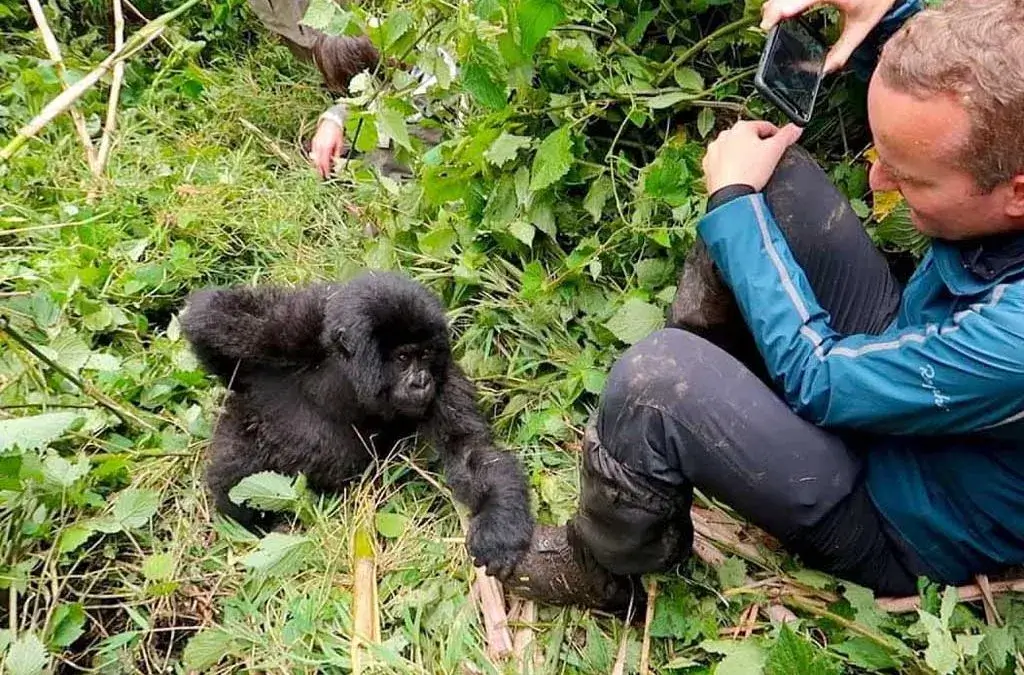
Opt for moisture-wicking, breathable fabrics to stay comfortable throughout the trek.
2. Waterproof Jacket or Rain Poncho
Both Uganda and Rwanda experience unpredictable rainfall, even during the dry season. A lightweight waterproof jacket or rain poncho is essential to keep you dry while navigating the forest trails.
In Africa, rain jackets are more common than rain poncho but they function almost the same. Rain poncho are you to cover more luggage than rain jackets.
3. Hiking Boots – Best Hiking Boots for Gorilla Trekking
The terrain in the national parks is rugged, muddy, and sometimes steep. Investing in the best hiking boots for gorilla trekking ensures stability, grip, and ankle support.
Choose waterproof boots with good traction to navigate slippery trails with ease.
4. Gaiters for Gorilla Trekking
Gaiters for gorilla trekking protect your legs from mud, thorns, and insects. These are especially useful during the rainy season when trails can be muddy and slippery. Gaiters also help keep your hiking boots dry and prevent debris from getting inside.
5. Best Gloves for Gorilla Trekking
Gloves are often overlooked but are extremely important for gorilla trekking. The best gloves for gorilla trekking should provide a good grip and protect your hands from scratches, insect bites, and thorny vegetation.
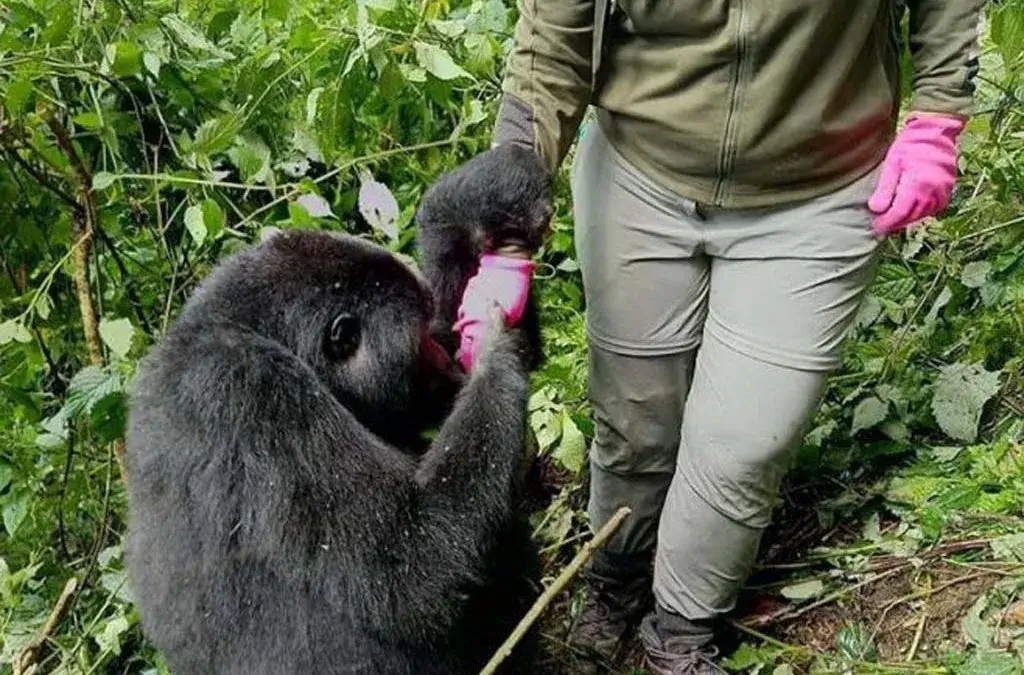
Many trekkers opt for gardening gloves for gorilla trekking as they are durable, breathable, and provide excellent protection. This is because sometimes you have to grab on vines which might have thorns. This is mainly to support yourself from falling.
6. Face Masks
Wearing face masks over the mouth and nose during gorilla trekking in Uganda and Rwanda remains a crucial measure to prevent the transmission of diseases between humans and gorillas. Mountain gorillas are highly susceptible to human-borne illnesses, including respiratory infections, which can have severe impacts on their health.
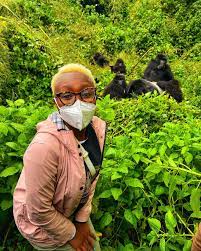
In both countries, wildlife authorities have implemented guidelines to protect these endangered primates. While general public mask mandates have been relaxed, specific protocols for gorilla trekking still emphasize the importance of mask-wearing when in proximity to the gorillas.
This precaution helps minimize the risk of disease transmission, ensuring the safety and conservation of these remarkable animals.
In addition to mask-wearing, other standard operating procedures include maintaining a safe distance from the gorillas, regular hand sanitization, and avoiding trekking if exhibiting any signs of illness.
These measures collectively contribute to the well-being of both visitors and gorillas, promoting responsible and sustainable wildlife tourism.
Check out our 3 Days Gorilla trekking safari in Uganda.
Accessories and Gear to Carry For Gorilla Trekking
1. Best Backpack for Gorilla Trekking
A lightweight, waterproof, and durable backpack is essential to carry your trekking essentials, such as water, snacks, camera gear, and rain protection.
The best backpack for gorilla trekking should have adjustable straps, multiple compartments, and a hydration pack option.
2. Hat and Sunglasses
A wide-brimmed hat protects you from the sun, while UV-protection sunglasses shield your eyes from glare. These are particularly important if trekking during the dry season when temperatures can be high.
3. Insect Repellent
The tropical forests of Uganda and Rwanda are home to mosquitoes and other insects. Using DEET-based insect repellent will help keep bugs away, reducing the risk of bites.
4. Sunscreen
Even though the forest canopy provides shade, you’ll still need sunscreen to protect your skin from UV rays, especially when trekking in open areas.
5. Camera and Binoculars
A good camera will help capture memorable moments, while binoculars are great for spotting wildlife and birds from a distance.
Additional Tips for Gorilla Trekking Attire
- Avoid bright colors – Stick to neutral, earthy tones such as green, brown, or khaki to blend in with the environment.
- Wear moisture-wicking socks – These will keep your feet dry and prevent blisters during long hikes.
- Dress in layers – The mornings can be cold, but temperatures rise as you trek. Layering allows you to adjust accordingly.
Check out our 5 days Uganda gorilla trekking safari
Final Thoughts
Knowing what to wear gorilla trekking can make a significant difference in your comfort and overall experience. From choosing the best hiking boots for gorilla trekking to wearing gaiters for gorilla trekking, every piece of gear plays a vital role.
Whether you are wondering what to wear gorilla trekking in Uganda or what to wear gorilla trekking in Rwanda, the key is to dress for protection, comfort, and practicality.
By following this guide, you will be well-prepared for an amazing gorilla trekking adventure in Africa’s breathtaking rainforests!
